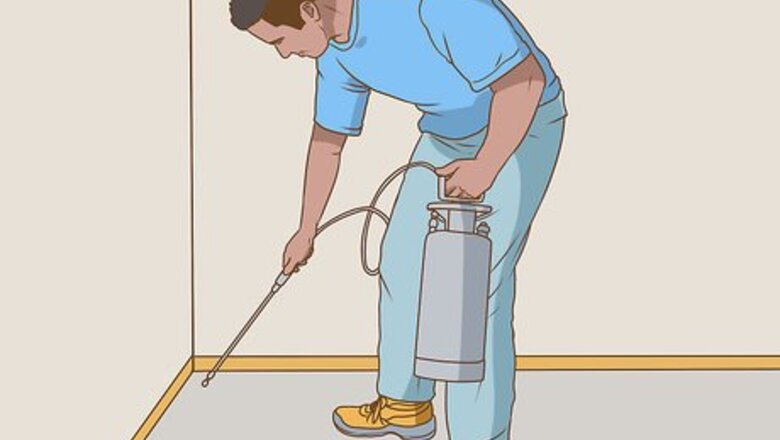
views
Ridding Your Home of Sand Fleas

Use pesticides throughout your home. Spray pesticides in places where sand fleas may be lurking, such as floors, carpets and furniture. To avoid exposing yourself or your pet to harmful chemicals, choose an organic pesticide product that’s been approved for home use. Pesticides will essentially shut down the sand fleas’ nervous systems, killing them within a matter of hours. There is evidence to suggest that natural compounds like diatomaceous earth and salt are effective for eliminating sand fleas. Sprinkle the compound around problem areas, let it sit for up to 24 hours, then suction it and any dead pests up with a vacuum. Do not use pesticides containing toxic chemicals in areas frequently occupied by you, your family or your pet.
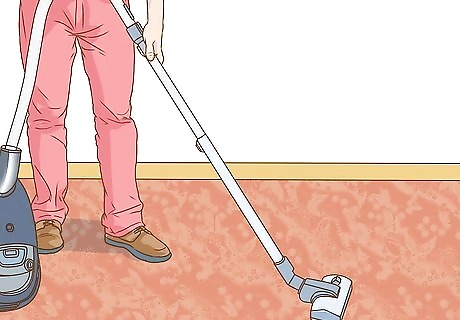
Vacuum your carpets and upholstery. Go over spots that may harbor hidden sand fleas. Pay particular attention to the rooms and routes you tend to use the most, as there’s a better chance that sand fleas will be found there. Repeat this process once a day until the infestation is under control. Use your vacuum’s brush head attachment to dislodge sand fleas stuck down deep in carpet fibers. Empty or dispose of vacuum bags after vacuuming. Vacuuming helps to remove pests and their eggs that are too small to be detected.
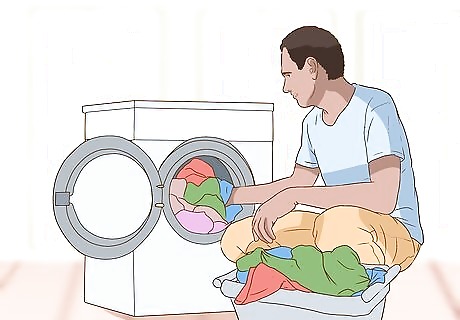
Wash used clothing and bedding. Sand fleas can easily be concealed in the folds of clothing and bedding and may not stand out on light-colored fabrics. After discovering signs of a sand flea infestation, these items should be cleaned immediately. Wash each load of laundry with hot water and strong detergent. Always wash clothing, towels and other beach accessories as soon as you get home. You should never reuse dirty items, as there’s a chance they could contain sand fleas. Be sure to check your partner’s clothing and bedding items as well if you happen to share a room.
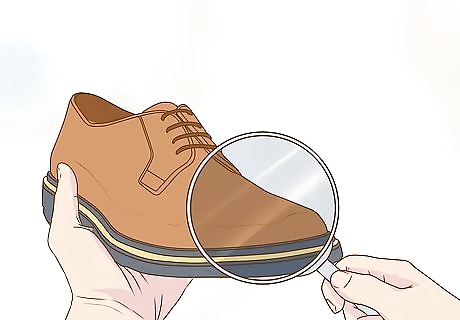
Inspect your shoes and clothing when returning home. Take a quick look at your legs and the tops and bottoms of your shoes before reentering your home. This is especially important if you’ve recently been to the beach or anywhere else where you might encounter sand fleas. It’s possible for undetected sand fleas to hitch a ride into your living space, making the problem worse. Start leaving your dirty shoes outside until you’ve had a chance to clean them.
Controlling Sand Fleas on Pets
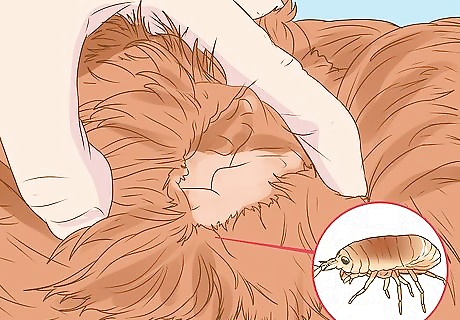
Check indoor pets for sand fleas. Though most land animals aren’t at risk of sand flea infestation, dogs and cats with thick fur may carry them into your home unknowingly. Spread your pet’s fur with your fingertips and look for bites or swelling. It may be difficult to spot sand fleas themselves depending on fur color, but their red, inflamed bites will almost always be visible at skin level. Pay attention to behaviors like excessive scratching or licking. These could be warning signs that your dog or cat may be carrying sand fleas. Though tedious, being vigilant about checking for pests is the best way to keep them from setting up in your home.
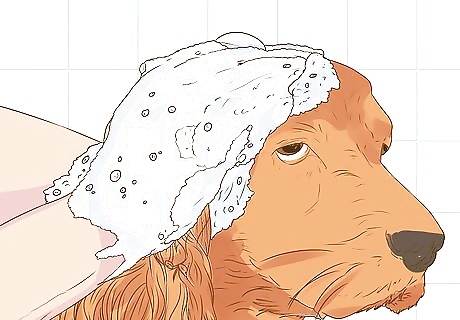
Groom your pets thoroughly. Give your pet a bath using warm water and shampoo, then towel or blow them dry completely. Once you’re finished, apply an anti-flea medication to prevent sand fleas from coming back. The life cycle of adult sand fleas is around 48 hours, so it may be a good idea to keep your pet indoors during this time. Dab a little antihistamine cream on your pet’s bites to reduce itching and redness. Take your pet to the vet if you suspect that it may be a host for sand flea eggs.
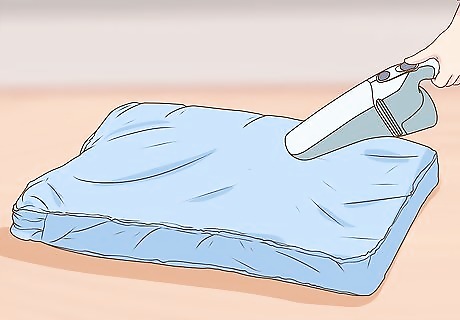
Clean pet bedding and toys. Vacuum any objects with soft, porous surfaces to ensure that unseen sand fleas won’t immediately return. This includes things like dog beds, blankets, pillows and soft fabric toys. Steam cleaning has been shown to effectively wipe out sand fleas lodged in clothing and other objects. Consider treating pet areas with an organic pesticide or diatomaceous earth. Be sure to vacuum and clean them afterwards so that your pet doesn’t accidentally ingest any harmful substances.

Be wary of where you take your pets. Sand fleas are most commonly found in warm, humid marine conditions. They tend to be most active between late night and early morning. If you often walk or play with your pet in these types of places, schedule your outing for daylight hours and stick to the sidewalk or tall grass to minimize their chance of contracting sand fleas. Dogs are at especially high risk of picking up sand fleas due to their tendency to roll and dig. Cover up or spray yourself with insect repellent before spending time in places that are natural habitats for sand fleas.
Identifying and Treating Sand Flea Bites
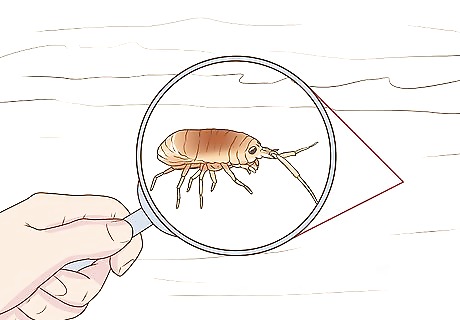
Learn to identify sand fleas. The average sand flea can range in size from a speck of salt to a grain of rice. In fact, sand fleas often look like sand particles themselves, which is how they’re able to attach to their hosts without being noticed. While it is possible to spot sand fleas with the naked eye, you’ll usually have to look quite closely. Sand fleas most often attach to feet and legs since they’re closest to the ground. If you notice something crawling or jumping anywhere on your body, you can be sure it’s not just dirt.
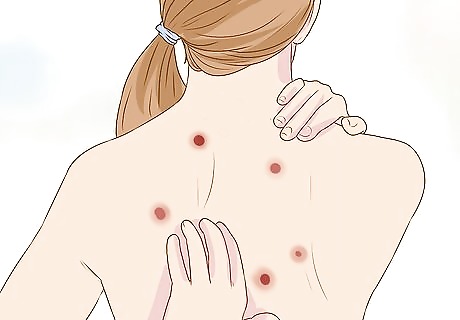
Scan yourself for bites. Sand fleas bite their hosts in order to feed and embed their eggs. Their bites leave behind round, red spots that may burn or itch intensely. The bite of a sand flea can be extremely uncomfortable and will almost always cause irritation, especially when rubbed or scratched. A small black head or white pustule at the center of a bite may be an indication that a sand flea has burrowed into the skin and laid eggs. Resist the urge to scratch itchy sand flea bites. While this may provide temporary relief, it increase the risk of spreading infected saliva or egg deposits beneath the skin.
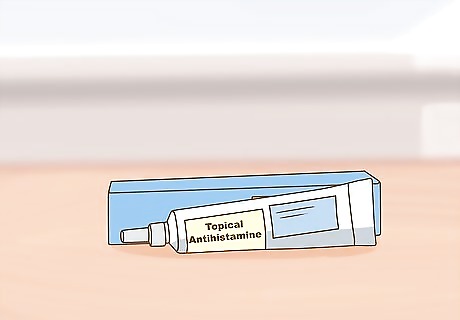
Apply a topical antihistamine. Medications like Benadryl and Neosporin can help alleviate the burning and itching brought about by sand flea bites. It may also be useful to swab the bite with rubbing alcohol, as this will dry out the wound and prevent it from becoming infected. Most sand flea bites will clear up within a week or two and won’t cause any lasting health effects. Essential oils like lavender, eucalyptus and tea tree can also offer drying action and relief from itching. If you notice a sand flea bite beginning to swell or grow more painful, visit a doctor right away.



















Comments
0 comment